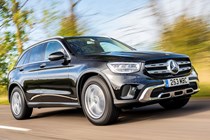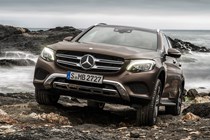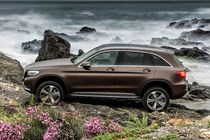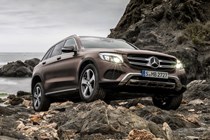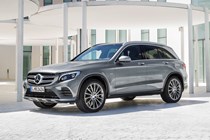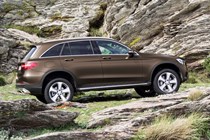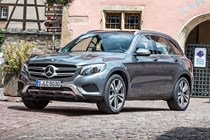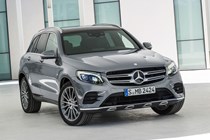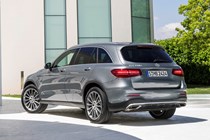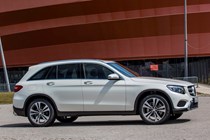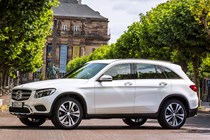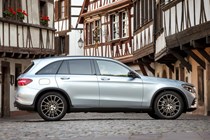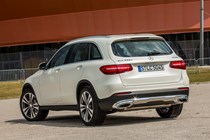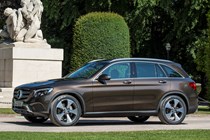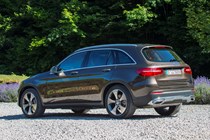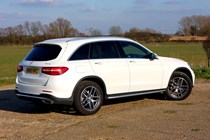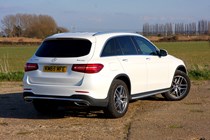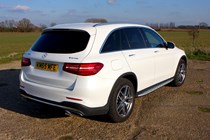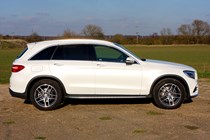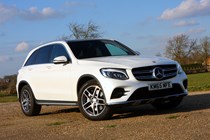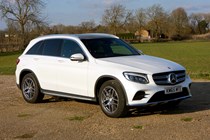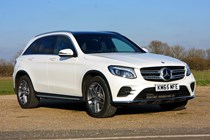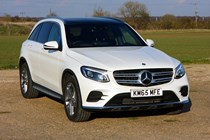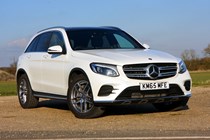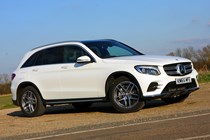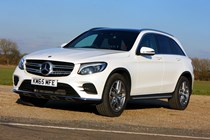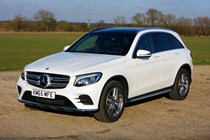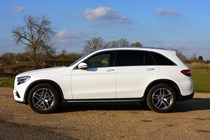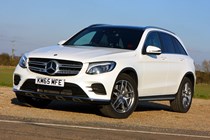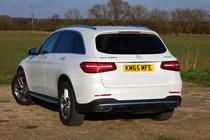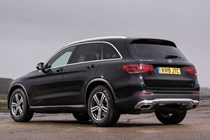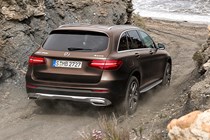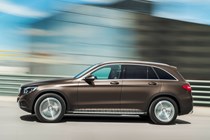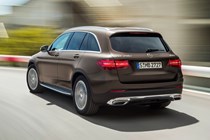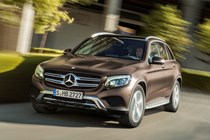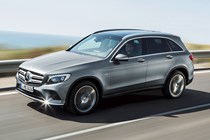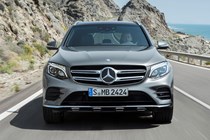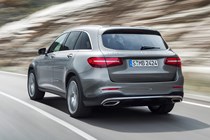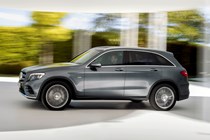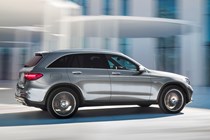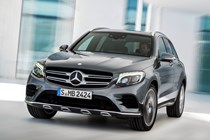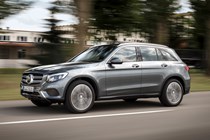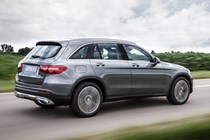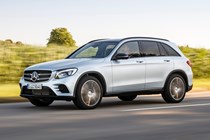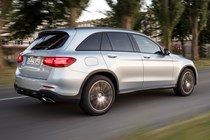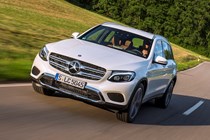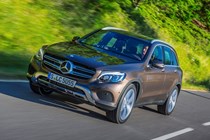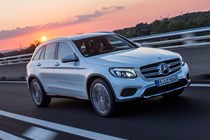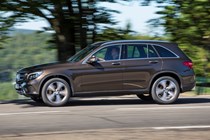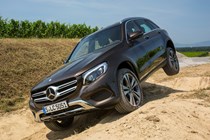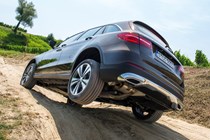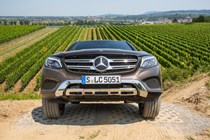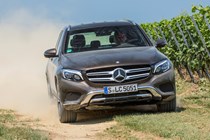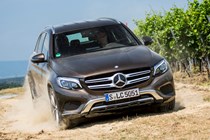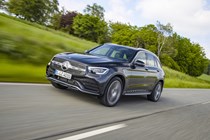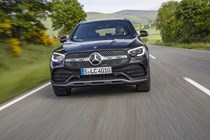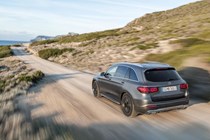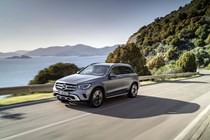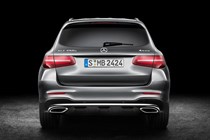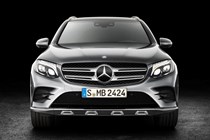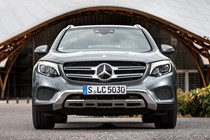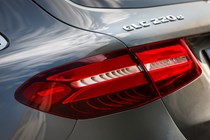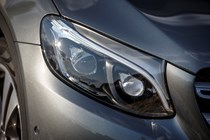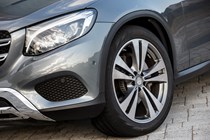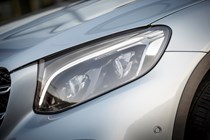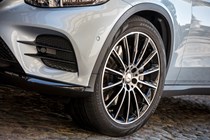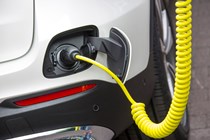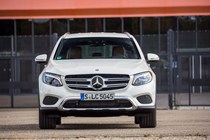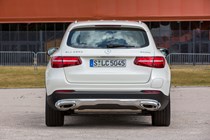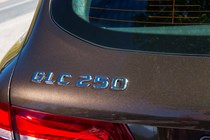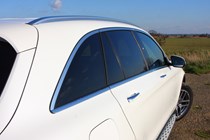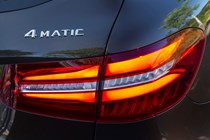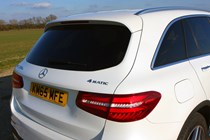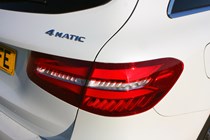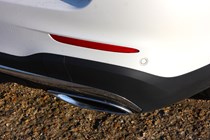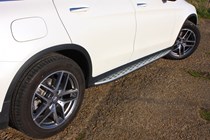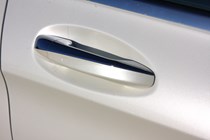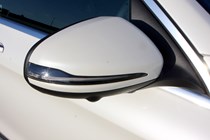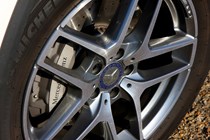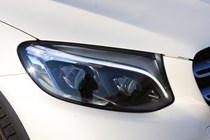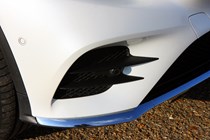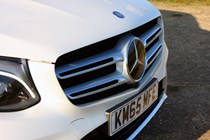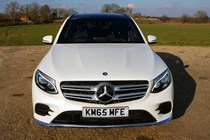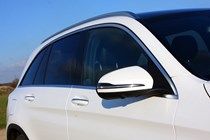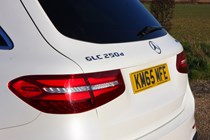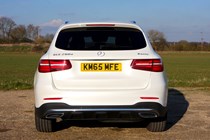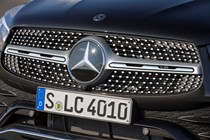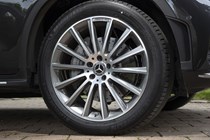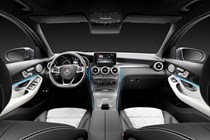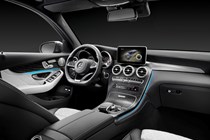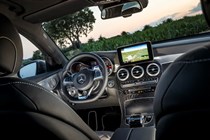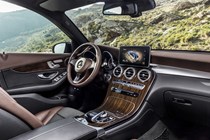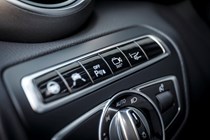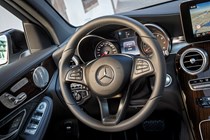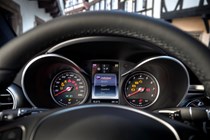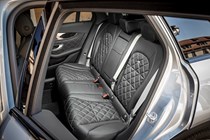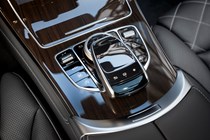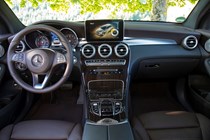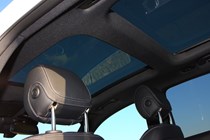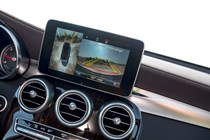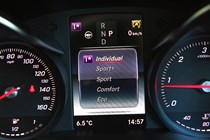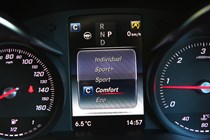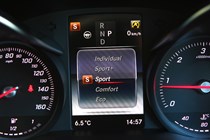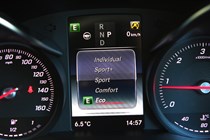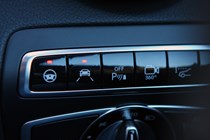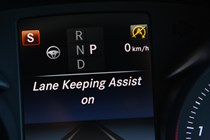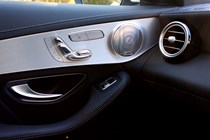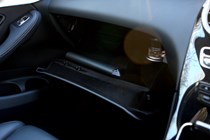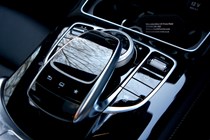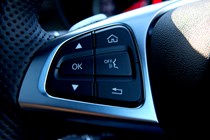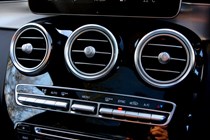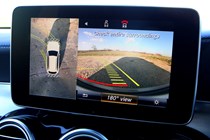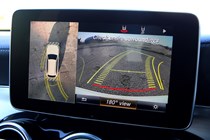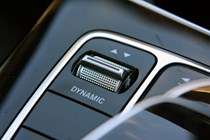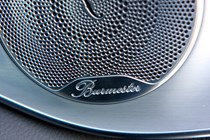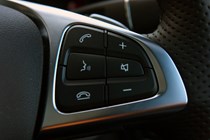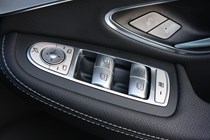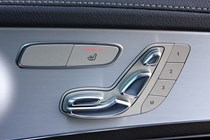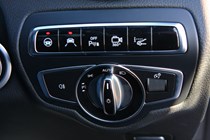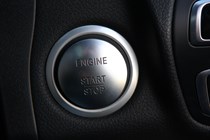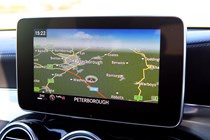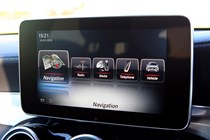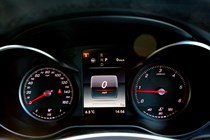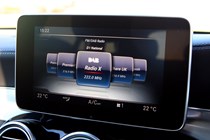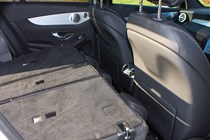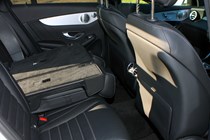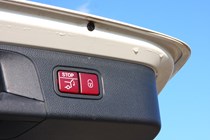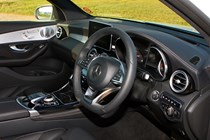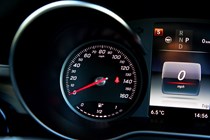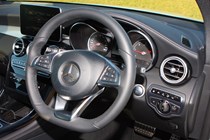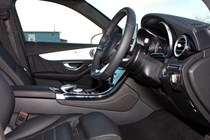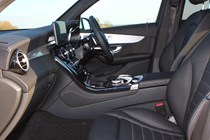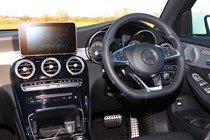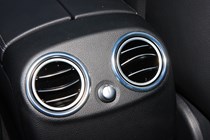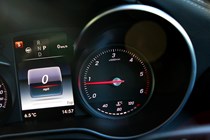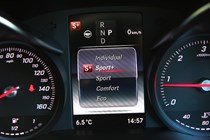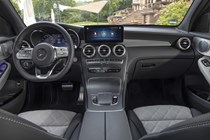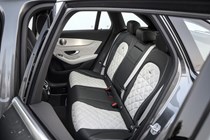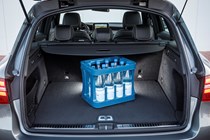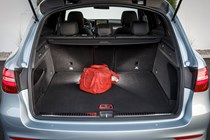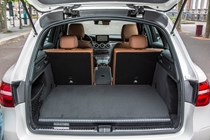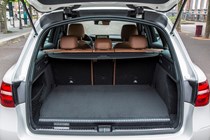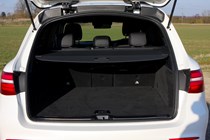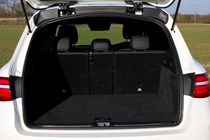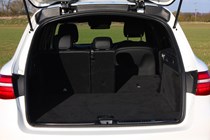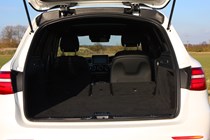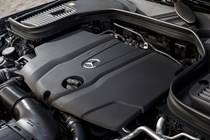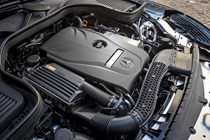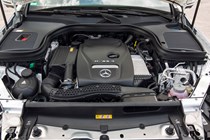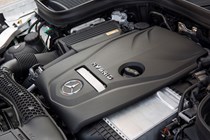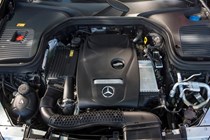
Mercedes-Benz GLC-Class 4x4 engines, drive and performance
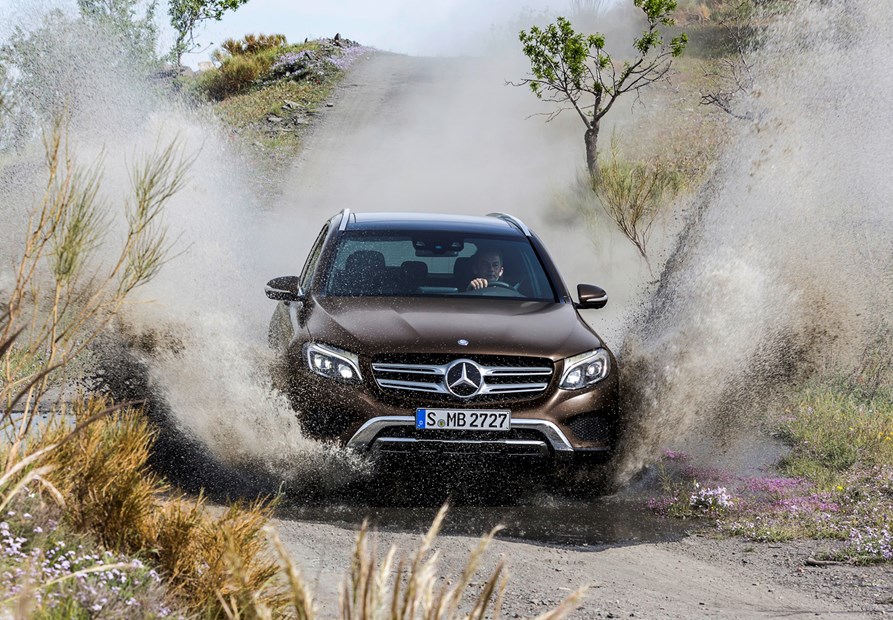
- Petrol, diesel and plug-in hybrid options
- Nine-speed automatic and four-wheel drive standard
- Rivals are better to drive
Petrol engines
There’s only one petrol engine in the regular GLC line up, and that’s fitted to the GLC 300. Despite the name, it’s a 2.0-litre turbocharged four-cylinder with over 250hp. It benefits from mild-hybrid technology to improve emissions a little and give the engine a bit more pep at low revs.
Like every other GLC, a nine-speed automatic gearbox and four-wheel drive is standard, helping the 300 sprint from 0-62mph in a little over 6.0 seconds. It’s not quite as effortless from low engine speeds as the diesels, but certainly feels brisk when you start working it harder.
If you want more poke you’ll need one of the AMG-fettled models. The V6 GLC 43 has nearly 400hp to give a sub-five second 0-62mph time. It sounds pretty fruity and is undoubtedly fast and flexible, but the V8 GLC 63 is something else again. With over 500hp it’ll run from 0-62mph in less than four seconds whilst generating an almighty bellow. It’s undoubtedly overkill, but it helps the GLC 63 feel like a proper hot rod.
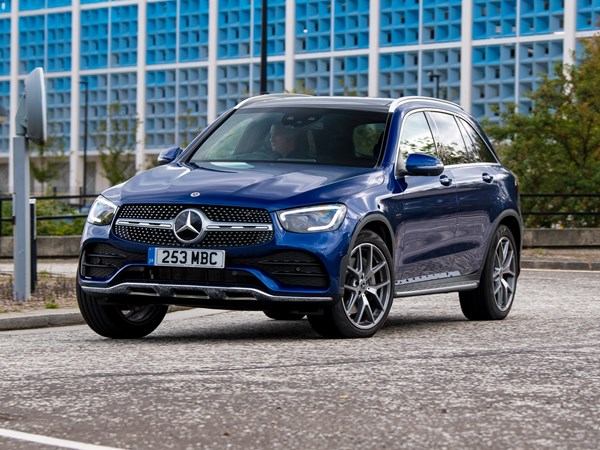
Diesel engines
The GLC range kicks off with the diesel-powered 220d. With nearly 200hp and a sub-eight second 0-62mph time, it’s arguably all the engine you really need. You don’t have to rev it very hard for it to get going either, so it’s perfect for sensible family life.
If you want a bit more pace or you’re considering doing a spot of towing, the 300d is worth considering. With nearly 250hp for not much more than the 220d, it knocks over a second off the 0-62mph time and feels more muscular on the road. Regardless of which you pick, they’re essentially the same 2.0-litre engine.
Hybrid engines
Mercedes is unusual in offering both petrol and diesel versions of their plug-in hybrids. The 300e petrol is the fastest non-AMG GLC available, although you do have a moment of hesitation when you put your foot down as both power sources come on song.
The 300de diesel still feels pretty punchy, although it’s not quite as smooth, quiet and quick as the petrol. In electric mode both are far more sedate, although there’s enough poke to get you up to motorway speeds in typical traffic.
Disappointingly, both plug-in GLCs have a sub-30-mile electric only range according to official figures. That’s still a useful amount especially in urban environments, but almost all rivals can do more miles per charge.
What’s it like to drive?
- Smooth automatic gearbox
- Comfy on the motorway
- Not much fun in the bends
Mercedes has prioritised comfort over agile handling for most GLC models – not entirely successfully, it has to be said. Though the car settles down to a comfortable cruise on the motorway, the low-speed ride is slightly unimpressive, bouncing over bumps rather than absorbing them. This is true regardless of the wheel size you select.
If you do decide to corner quickly, there’s plenty of grip and not much in the way of body lean thanks to the wide tyres and sports suspension that’s standard on AMG Line models. However, the steering isn’t as precise as an Audi Q5 or BMW X3’s, while the X3 feels more agile and more fun.
All GLCs come with Mercedes’ ‘Dynamic Select’ switch down by the infotainment controller. It allows the driver to cycle through Comfort, Eco, Sport, Sport+ and Individual modes, tailoring throttle, gearbox and steering reactions. On less powerful models, drivers will likely be happier leaving the GLC in ‘Comfort’ by default – with Sport modes adding artificial-feeling weight to the steering without improving its rather remote feel.
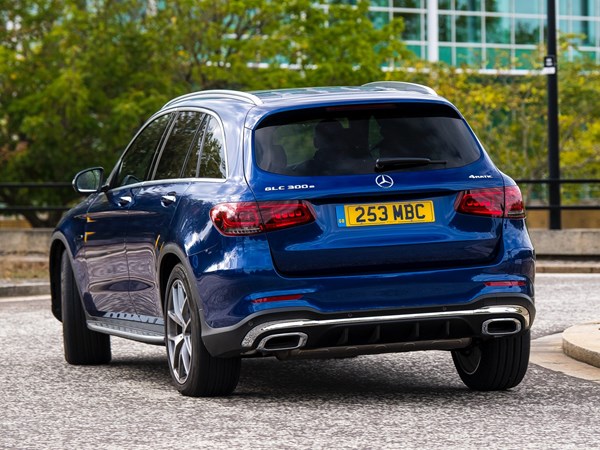
Sport also has a tendency to hold on to gears for too long, leaving the engine revving away harder than is necessary unless you’re really pushing on. And if you are doing so, keen drivers will prefer to use the steering-wheel mounted paddles.
As for refinement, the diesel engines aren’t quite as hushed as those found in the Audi Q5 although the petrols are perfectly acceptable. The automatic gearbox shifts smoothly on all models and the hybrid models switch from electric to engine power without too much fuss.
Towing
Even plug-in hybrid GLCs can tow a 2,000kg braked trailer. This increases to 2,170kg for the AMG 43 and 63, 2,200kg for the 220d, 2,400kg for the 300 and 2,500kg for the 300d.

AMG models
Both the GLC 43 and GLC 63 come as standard with air suspension that allows you to stiffen or soften the car to suit your mood. The 43 is geared more towards comfort and is perfectly liveable every day, but the 63 is firm regardless of how you’ve got the suspension set. It isn’t as stiff as an Alfa Romeo Stelvio Quadrifoglio or BMW X3 M, but a Porsche Macan GTS or Jaguar F-Pace SVR are both far more comfortable.
Unsurprisingly this means the 43 is capable if not all that exciting in the bends, while the 63 at first seems far more capable. If you push hard enough to find the 63’s limits, you might be disappointed to find the stability control is sudden and inconsistent in its intervention. While sometimes you can enjoy a little low speed hooliganism, at higher speeds the 63 clumsily applies the brakes to stop it getting out of shape.
It’s a shame as the GLC 63 is undoubtedly one of the fastest SUVs available, but those looking for entertainment are much better served by the Macan GTS or Stelvio Quadrifoglio.


